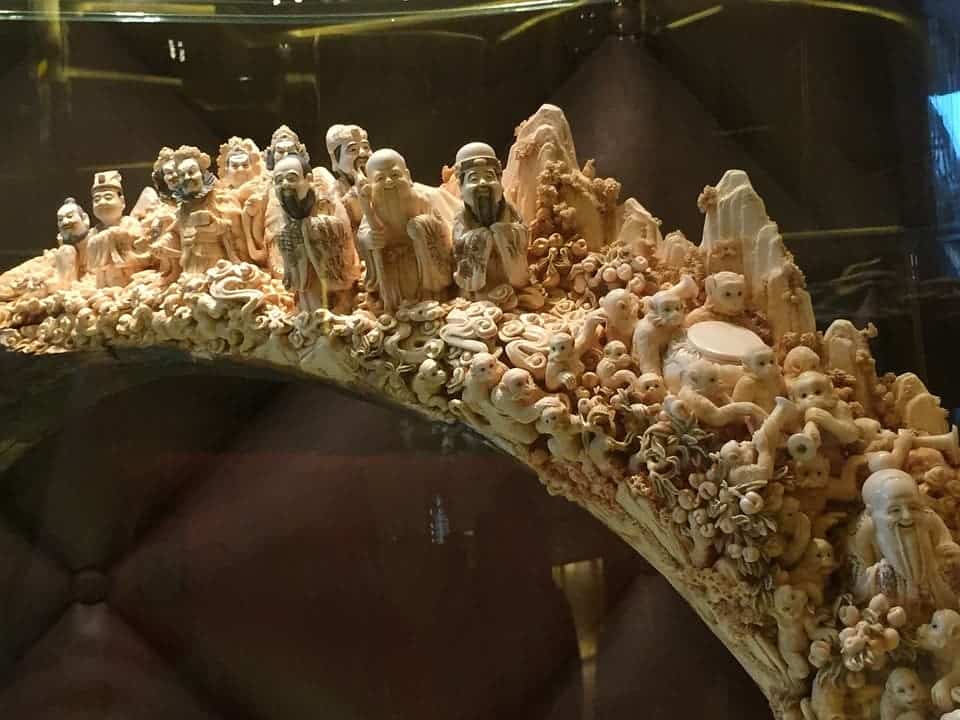The global ban on ivory has increased the price of tusks on legitimate and black markets tenfold.

Back in 1989, the Convention on the International Trade in Endangered Species (CITES) issued a worldwide ban on the trading of ivory. The move was intended to insulate Earth’s elephants from hunters and poachers and help stave off extinction. The decision did work: ivory prices plummeted, initially, and markets around the world closed down.
However, that was just the initial effect of the ban. A new study shows that the price of ivory increased tenfold since 1989, which is driving up incentive for poachers supplying illegal markets. Poaching is now responsible for an 8% drop in the world’s total elephant population every year, the team reports — and they hope this analysis can help us drive that number down.
Black ivory
“With poachers killing an estimated 100 elephants of the remaining 350,000 each day, we believe our findings are significant to global wildlife conservation policy-making,” says lead author Monique Sosnowski, who carried out the research at the Bristol Veterinary School as part of her MSc in Global Wildlife Health and Conservation.
The ban was introduced in 1975 for Asian elephants and 1989 for African elephants in response to unsustainable elephant poaching in the 1970s and 80s. The species were placed on Appendix I of the CITES, which forbids all international trade in a species and its products.
To better understand its effects, the team used data on ivory prices collected between 1989 and 2017 from literature searches and visits to ivory markets across Africa, Europe, and Asia, which they meshed with information such as ivory product type (raw, polished, carved), weight, region, and legality. This dataset allowed them to gauge the factors that lead to the rise in ivory prices.
Asian markets demand the highest prices for ivory on a global scale, while prices are the lowest in Africa. The global average price of ivory increased tenfold (~1,019%) between 1989 and 2014, but has been slowly decreasing since 2014. The main factors influencing the sale, purchasing, and price of ivory were the location of sale, whether the ivory had been carved or worked in any way, the legality of the sale (there are conditions under which ivory can be traded legally), and the total amount of ivory estimated to have been traded that year.
“Until now, very little has been known about global ivory prices since the international ban in 1989,” says Sosnowski. “We hope that a greater understanding of the factors that drive the price of ivory will lead to better informed policy interventions that lead to a more secure future for the long-term survival of elephants and other animals that suffer due to the ivory trade.”
The team hopes that their research will help policymakers better tweak global ivory policy. They explain that understanding regional price trends, the variables that drive them, and the associated demand can guide efforts on anti-trade campaigns, wildlife conservation, and education — all of them aimed at combating poaching. For example, focusing efforts to more heavily regulate trade in East Asia, where ivory demand and prices are highest, could decrease poaching and increase future security for elephants.
In the future, the team plans to incorporate their findings into larger economic models to guide more effective policy design concerning the CITES ivory ban, national trade regulations, and global ivory stockpile management. They also say that a similar study framework could be used for other endangered species experiencing poaching and illegal trade in their products, such as rhinos and tigers.
The paper “Global ivory market prices since the 1989 CITES ban” has been published in the journal Biological Conservation.


